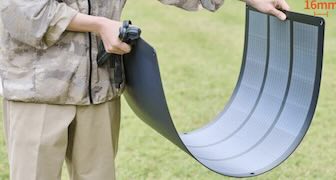Oct 11 (Japan Today) - In recent years, stink bugs, which can cause major damage to farm crops, have been appearing in alarming numbers in Japan.
By the end of August this year, 35 of the country's 47 prefectures had issued "stink bug warnings" to farmers, according to the Ministry of Agriculture, Forestry and Fisheries.
Global warming is likely behind the population rise of the insect, which feeds on plant fluids, experts say, warning that its numbers could keep growing.
Stink bugs produce a foul smell when threatened, a mechanism thought to help ward off predators. They are also called shield bugs.
"Damage this year is the worst ever," Toru Kawana, 47, a grower of high-quality Japanese pears in Kawasaki, Kanagawa Prefecture, lamented as he held up unevenly shaped pears whose juices had been partially sucked out by stink bugs. "Stink bugs and other pests have increased because of temperature rises caused by climate change," he said.
Warnings have been issued against three kinds of stink bug -- those that suck nutrients from and discolor rice plants, bugs that pierce the skin of fruits and extract their juices, and bugs that attack soybean plants. ...continue reading















